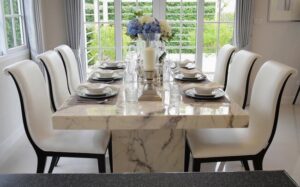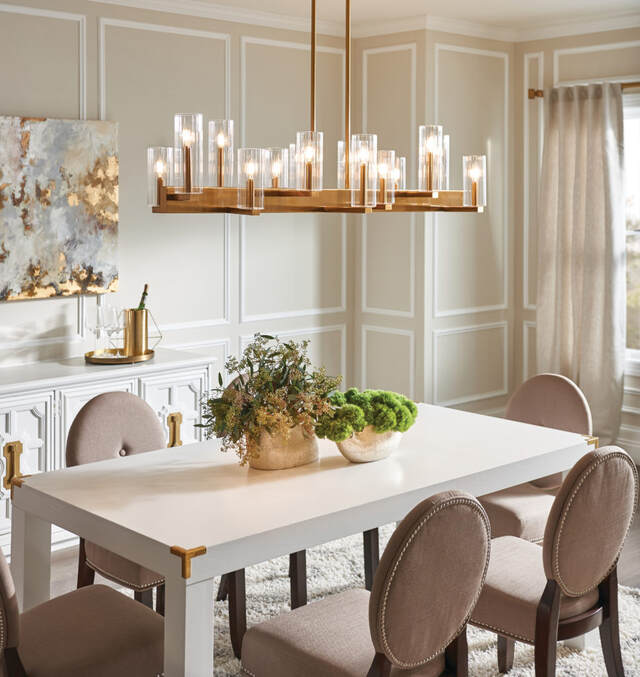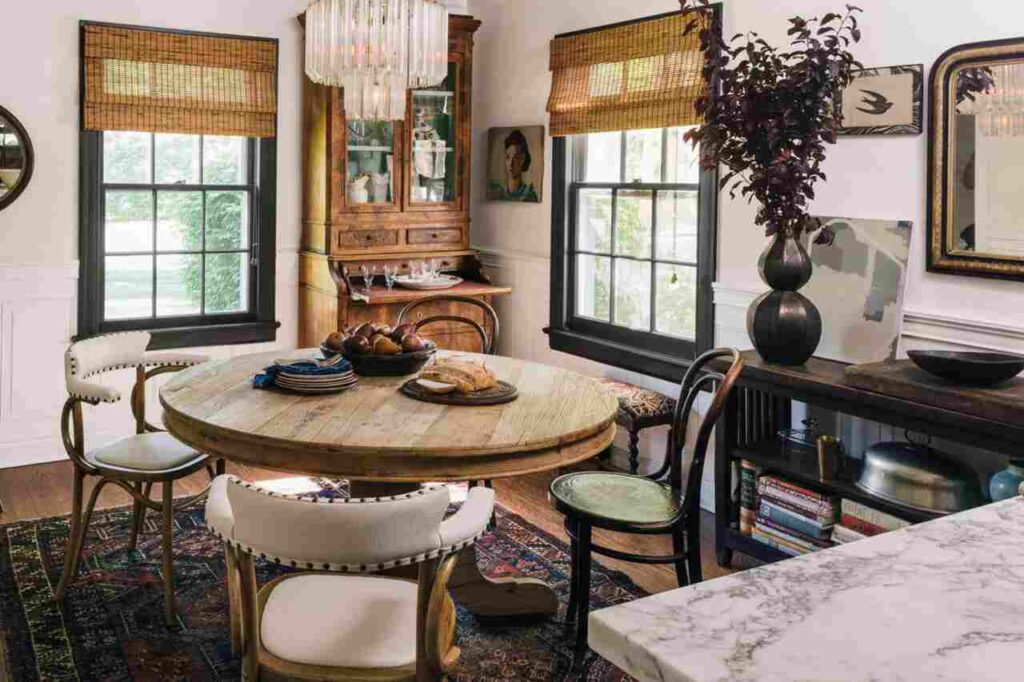A dining table for a tiny living room might be difficult yet worthwhile when space is limited. Careful design and innovative ideas can help you to smoothly include a useful eating space without sacrificing comfort or style. Complete with useful advice and innovative ideas, this comprehensive guide will help you negotiate this procedure.
Assessing Your Space
Spend some time closely examining the layout and measurements of your living room before you begin looking for a dining table or reorganizing your furnishings. Calculate the accessible area and take mobility and other activity needs into account. Make a floor layout noting the locations of windows, doorways, and any architectural element that can influence where your dining table should be placed. This phase will help you see the ideal configuration for your eating space.
Crucially, one should grasp the “small living room layout” and “room dimensions”. Making a “floor plan” and “measure your living room” can help you to fairly “assess your space.” These ideas enable you to effectively arrange your surroundings, thereby guiding your furniture placement options.
Choosing the Right Dining Table

Given limited space, choosing the appropriate dining table becomes absolutely vital. Search for small, versatile tables that will have several uses. Among great choices are drop-leaf tables, extendable tables, and fold-away tables. These designs let you change the table size to fit your needs, therefore saving room while the table is not in use. To optimize capability, think of tables with built-in storage.
Explore “space-saving dining tables,” “multifunctional furniture,” “drop-leaf tables,” “extendable tables,” “fold-away tables,” and “built-in storage.” These kind of furniture are meant to be flexible and effective, therefore enabling you to keep a clutter-free area.
Strategic Placement
Maintaining a balanced and useful living environment depends on your dining table being placed in the best spot. To save area, think about orienting the table in a corner or against a wall. If your living room is open-plan, split it into a separate dining space using the dining table. Make sure the table’s surrounds allow for comfortable sitting and mobility.
Knowing “dining table placement,” “small living room,” “optimal location,” “room divider,” and “open-plan living” will enable you to arrange your table to best use space. These words relate to the ideal standards for furniture arrangement in a constrained space to guarantee both practicality and aesthetic attractiveness.
Multi-Use Furniture

Every piece of furniture in a compact living room should be reasonably useful. Invest in multipurpose furniture include ottomans with secret chambers, storage benches, or a sofa that doubles as a dining booth. While they are part of your dining arrangement, these pieces can offer additional seats or storage. This method not only saves space but also maintains the neatness and organization of your living place.
Knowing “multi-use furniture,” “storage benches,” “hidden compartments,” “convertible furniture,” and “space efficiency” will enable you to choose pieces with more than one use, therefore increasing the adaptability and efficiency of your tiny living room.
Creative Seating Solutions
The space your dining room takes is largely influenced by chairs and benches. Choose folding or stackable chairs that will fit well for storage when not in use. Particularly if they can be nestled under the table, benches can be a space-saving substitute for chairs. To save even more space, consider incorporating built-in bench seating along a wall.
Knowing “stackable chairs,” “folding chairs,” “space-saving seating,” “benches,” and “built-in seating” will enable you to select chairs that best maximize the space in your tiny living room and provide utility.
Clever Storage Ideas
Making the most of your little living room depends on its being orderly. Stow dining basics including dishes, cutlery, and linens on wall-mounted shelves, cupboards, and hooks. When needed, a rolling cart can be a mobile eating station providing extra prep area and storage. Frequent decluttering will also aid to have a neat and roomy surroundings.
Knowing “clever storage ideas,” “wall-mounted shelves,” “cabinets,” “rolling cart,” and “decluttering” will help you to keep your living room neat and functional. Managing limited areas depends mostly on efficient storage methods.
Lighting and Decor

Defining areas and creating the mood in which one lives depend critically on lighting. Emphasize your dining room using pendant lights or chandeliers to visually separate from the living area. Mirrors reflect light and help the room seem bigger, so improving the ambiance generally. Select décor pieces that accentuate both spaces to produce a coordinated design.
Knowing “pendant lights,” “chandeliers,” “visual separation,” “mirrors,” and “coherent décor” will help you design a welcoming and clearly defined eating space inside your small living room. The appearance and feel of your area will be much changed by appropriate lighting and décor selection.
Practical Tips for Small Space Dining: Making the Most Out of Every Inch
Finally, here are some additional practical tips to help you make the most of your small living room dining area:
1. Use Transparent Furniture: Clear acrylic or glass tables and chairs create the illusion of more space.
2. Opt for Round Tables: Round tables take up less space and are easier to navigate around.
3. Wall-Mounted Tables: Consider installing a wall-mounted drop-leaf table that can be folded away when not in use.
4. Rug Placement: Define the dining area with a rug, which can also add warmth and texture to the space.
5. Flexible Seating: Use stools or poufs that can double as side tables or additional seating when needed.
These useful advice include concepts like “transparent furniture,” “round tables,” “wall-mounted tables,” “rug placement,” and “flexible seating,” so providing creative ideas to enhance the utility and look of your small living space.
Conclusion
You may effectively fit a dining table into your small living room by carefully evaluating your space, selecting the correct furniture, and including innovative design ideas. To guide your furniture placement, first carefully measure your room and consider its layout. Choose versatile, space-saving furniture that not only meets you’re eating demands but also improves the general use of your living space.
Arrange your dining table such that it best uses the available space and keeps the area in harmonic balance. To utilize every square inch, think about dual-use products include convertible chairs and storage benches. Stackable chairs and built-in benches are among creative seating options that maximize the space and offer comfort and flexibility.
Use smart storage solutions to maintain clutter-free and orderly dining room. Stow basics effectively using rolling carts, cabinets, and wall-mounted shelving. Adding careful lighting and décor improves the ambiance and helps the room to seem bigger and more welcoming. The whole look and use of your integrated living and dining space may be greatly changed by changing the pendant lighting, mirrors, and other cohesive décor pieces.
Your approach can be improved even further with some practical advice as choosing round tables, translucent furniture, and wall-mounted tables. Specify the dining area using a well-placed rug and welcome adaptable seating choices to meet different demands.
Following these techniques can help you to maximize every inch by building a multifarious space that is both fashionable and useful. Your little living room can be turned into a neat, aesthetically beautiful space where dining and living live together peacefully. With careful preparation and creative approach, embrace the challenge and you will have a wonderfully integrated environment meeting all your needs.
For more Informative articles you can visit our blog royalsprinter.com

